The Lowdown
For the DJ/producer interested in using hardware rather than software to make music, the IK Multimedia Uno Synth Pro is a good choice. It builds on the company’s previous Uno Synth to offer a great value, great sounding instrument. We tested the Uno Synth Pro Desktop, the smaller version, but there’s also a 37-key full-sized version – although operationally, both are identical.
First Impressions / Setting up
This is a versatile analogue synthesiser, that can be played simply as an instrument on its own, used to create “songs” using its built-in sequencer and song mode, connected via Midi to an external sequencer, or included as an instrument with your DAW. For the latter you use the free supplied Mac/windows software, a standalone version of which is also available for sound editing etc. It even has CV/gate ins/outs for sending and receiving voltages from Eurorack gear.
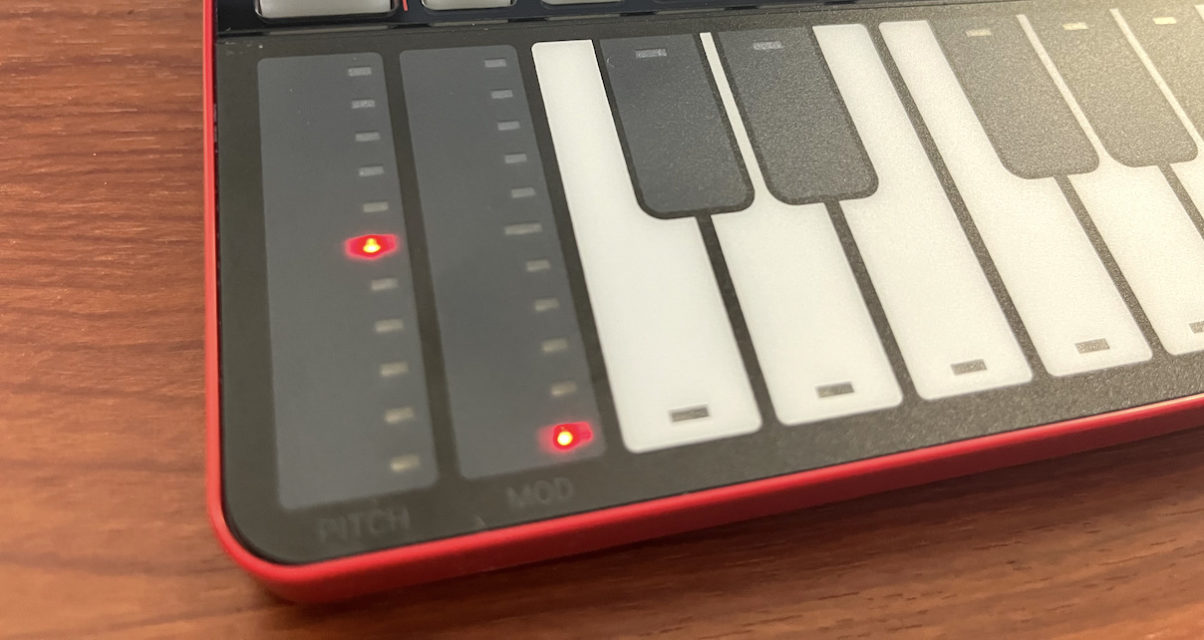
The model we tested is the IK Multimedia Uno Synth Pro desktop, a small instrument with a plastic build and a flat, capacitive 32-key keyboard, plus touchstrip “wheels” instead of physical ones. Apart from those things though, the rest of the controls are exactly as on the larger, 37-key “full sized” version of the instrument.
Read this next: 7 Things To Consider When Setting Up A First Home Music Studio
The instrument comes in a red plastic casing with a shiny black top plate, angled towards the user, and the top panel contains 40 backlit plastic buttons, an LED matrix readout, seven pots plus an endless encoder, and a very small OLED (ie viewable from all angles) screen. The latter is actually all you need for the slightly fiddly but necessary menu diving (thankfully, there’s not too much of that in the workflow).
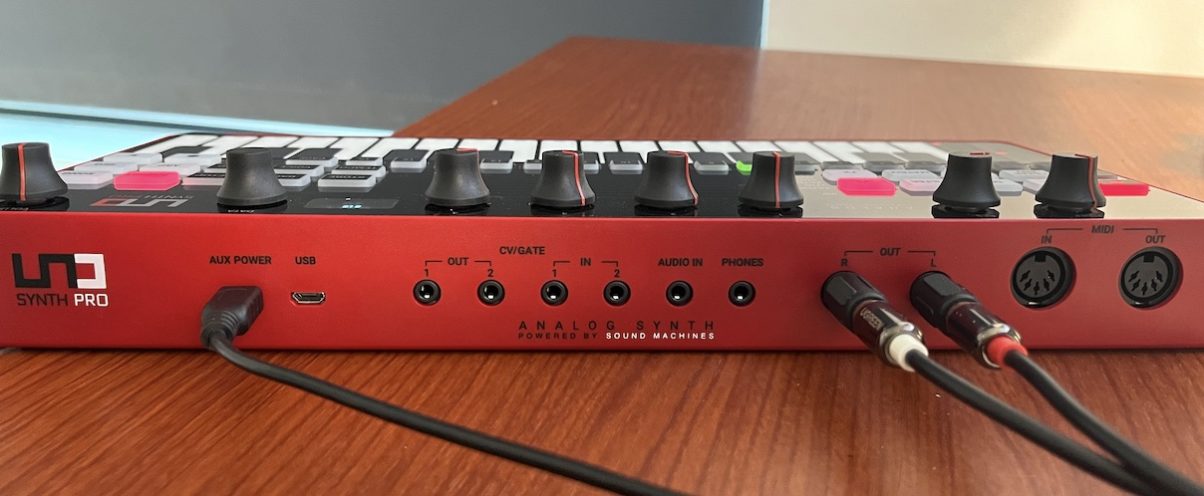
Around the back are, from left to right:
- Aux power micro USB input – IK Multimedia recommends using a power bank to keep noise low, although we had no issues powering this from a computer
- Computer micro USB in/out – works with the free editor app
- CV/gate ins/outs (two of each) – 1/8″ minijack for connecting modular gear
- Audio in – for feeding in external audio to use the in-built effects etc.
- Headphones socket – 1/8″ minijack
- 1/4″ balanced stereo outs – Synth is mono but the effects are stereo
- Midi in/out – full-sized DIN sockets
Overall, it’ a smart looking, well-designed little instrument.
In Use
Synth users will find little to trip them up here, as most functions are pretty intuitive. It is “paraphonic”, with three oscillators plus a noise generator, and you get dual filters and LFOs, envelopes, three slots of great-sounding FX (reverbs, delays, chorus, analgoue overdrive).
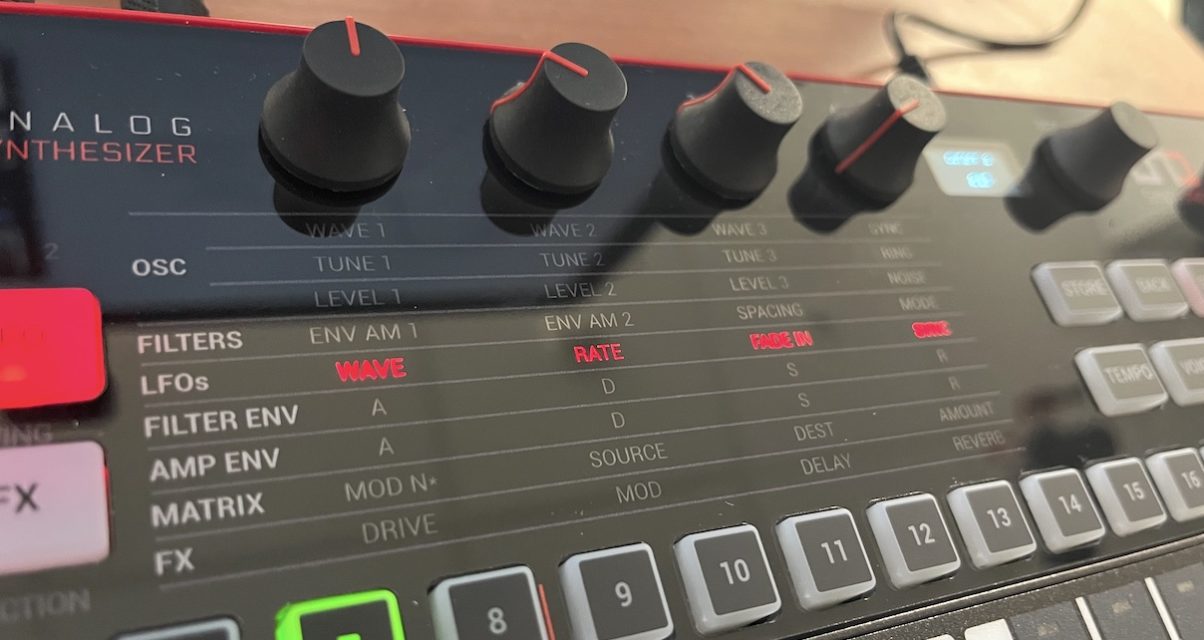
Luckily for relative synth beginners like me, there are 128 presets (and 256 slots), so you can get started making music with it quickly, only moving on to sound synthesis when you feel ready.
For us here at Digital DJ Tips, the appeal of the smaller instrument out of the two (again, there’s a “bigger brother” version too) is that it will slot easily into a small desktop DAW-less set-up, and as we chose to play it via an external sequencer over Midi, we’re weren’t at all bothered about the lack of a full-sized keyboard.
Read this next: Easy Guide To Music Theory For DJs
That said, the capacitive keyboard is sensitive to use, and we found the two touchstrip “mod wheels” to also respond well.
We used the synth in a small DAW-less set-up with a Novation Circuit Tracks and a small sampler. The Circuit Tracks lacks an arpeggiator, so we mainly used the Uno Synth Pro Desktop to add arpeggiated sequences over drums, basslines and pads provided by the Novation.
However, as the Uno Synth Pro is of course analogue, we also enjoyed using it to come up with fat basslines of the type the Novation instrument couldn’t provide.
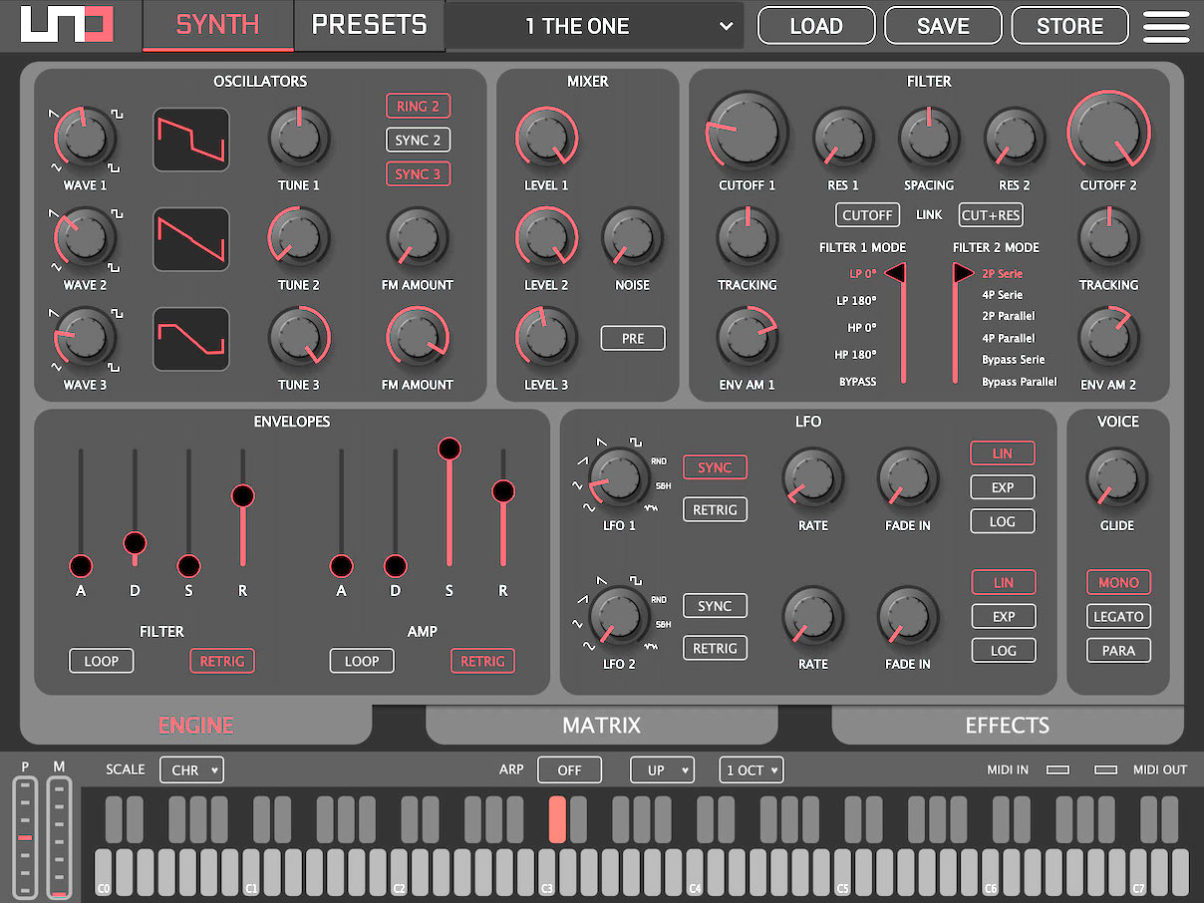
Although we were using the Novation Circuit Tracks as the sequencer here, the built in 16-part 64-step sequencer here is pretty powerful, and the song mode does mean you can build up complicated sequences with it – something we also enjoyed playing with. You can not only sequence notes but modulations, something you can also do on the Novation Circuit Tracks with its two (much more limited) synths, and we loved that about this instrument.
One thing we miss on our Korg Volca Bass when it comes to programming basslines is an accent feature – but alongside ties, you also get accents here on the Uno Synth Pro, which is great.
Conclusion
We are no synth experts here, looking instead for relatively cheap, fun musical instruments DJs may want to add to their set-ups to start dipping their toes into music production – in this case, while trying to avoid using a computer too much.
In the Uno Synth Pro, we found just such an instrument. It’s far more versatile than, say, a Korg Volca Bass (another instrument we’ve used a lot), but still true to its type – a genuine analogue synth, with all that means for dance music sounds.
For us, the arpeggiator is a big thing (because there isn’t one in the rest of our set-up), and we also really appreciated the on-board effects, again because any instrument with built-in effects transforms our overall sound. We haven’t tried the input to use the effects with other sources yet, but it’s something on our list and a great feature to have.
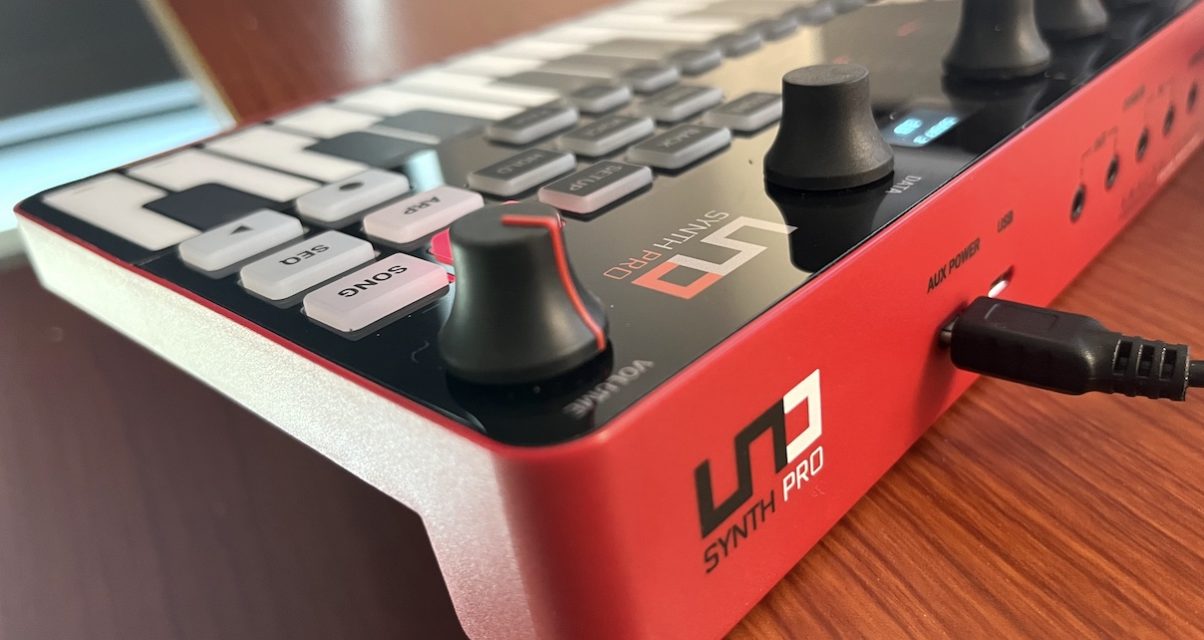
When it is time to dip your feet into serious sound design, IK Multimedia has you covered with the free Mac/Windows app which is going to be much less frustrating than menu diving, and there are also free patch sets to download with a few hundred sounds for you to use, maybe to fill those empty slots on the unit.
We’re the first to admit there is a lot more for us to discover with this instrument, and in the whole world of DAW-less music making, which is one of our aims this year at Digital DJ Tips.
We can see us using the little Uno Synth Pro Desktop alongside our sequencer, sampler and mixer to create grooves and sketches that we may or may not develop in a DAW later on. Either way, we’re finding this a great sounding and hugely fun little synth to use.




